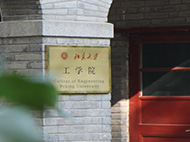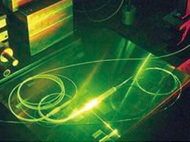主 办:生物医学工程系
报告人:Prof. Huabei Jiang (蒋华北)
时 间:6月13日(周三)上午10:00
地 点:王克桢楼1006会议室
主持人:戴志飞
报告内容摘要:
The lecture will describe the fundamental principles of several emerging optical-based imaging modalities including diffuse optical tomography (DOT), fluorescence molecular tomography (FMT) and photoacoustic tomography (PAT) for in vivo visualization of tissue at both the macroscopic and microscopic scales. In his laboratory, these imaging technologies have been developed to detect tumors, guide cancer therapies, probe inflammations, or map brain activities. This lecture will also report on his most recent clinical and preclinical studies in some of these areas.
报告人简介:
Medical Engineering at University of South Florida (USF) (美国南弗罗里达大学)
Email: hjiang@usf.edu
Dr. Huabei Jiang is a Professor of Medical Engineering at University of South Florida (USF) (Tampa, Florida), and the founding Director of USF Center Advanced Biomedical Imaging. Prof. Jiang has made pioneering contributions to the development of diffuse optical tomography (DOT), photoacoustic tomography (PAT), fluorescence molecular tomography (FMT), and bioluminescence tomography (BLT). He was the first to demonstrate bioluminescence tomography both theoretically and experimentally. He also developed the first finite element based reconstruction algorithm that has served as the foundation of fluorescence molecular tomography. As PI or Co-PI, his research has attracted more than $30M in federal grants over the last 20 years. More than 340 peer-reviewed publications have been generated from these federally funded projects. He has written the first book in the field of diffuse optical tomography entitled “Diffuse Optical Tomography: Principles and Applications”, and has also authored the first book in the field of photoacoustic tomography entitled “Photoacoustic Tomography”. Prof. Jiang has been elected as a Fellow of Optical Society of America (OSA), International Society for Optical Engineering (SPIE), and American Institute for Medical and Biological Engineering (AIMBE).








